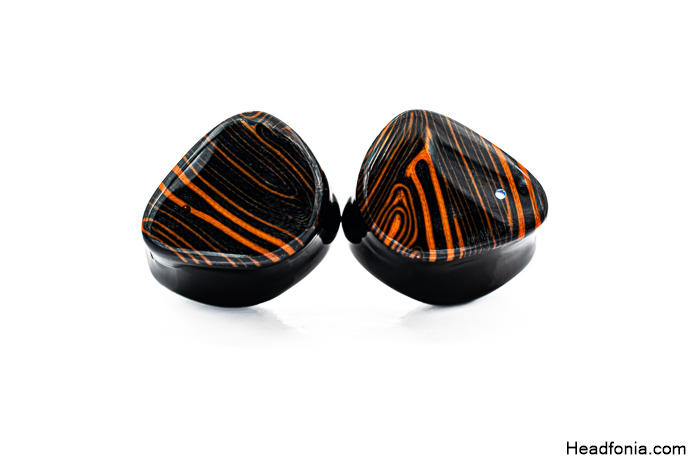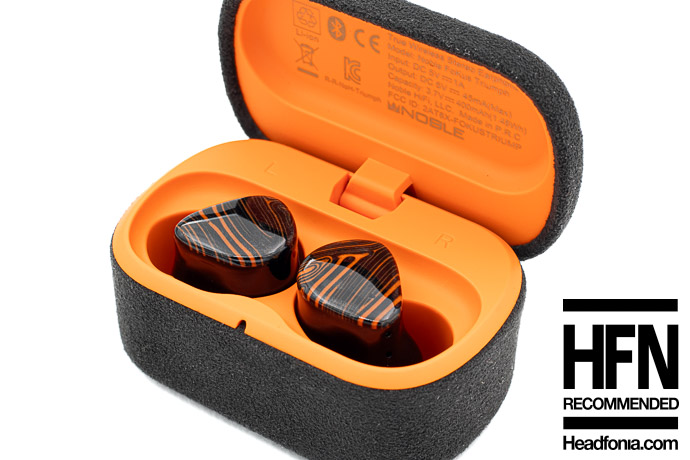Today, we review the Noble Audio FoKus Triumph True Wireless (TWS) In-Ear Monitors. It’s selling for $369 USD.
Disclaimer: Noble Audio sent us the FoKus Triumph TWS in-ear monitors for this review. As always, I am here convey my honest experience with the product.
Noble Audio
Noble Audio, a distinguished audio manufacturer based in the USA, has long been renowned for producing some of the most aesthetically pleasing and meticulously crafted CIEMs and IEMs on the market. Founded by John Moulton, widely known as ‘The Wizard,’ Noble’s reputation for attention to detail and premium materials has been a hallmark of the brand since its inception. My personal experience with Noble goes back to 2014 when I purchased the K10 and Savant, which were among the best in-ear monitors available at the time.
Noble ventured into the true wireless market in 2020, releasing the Falcon as their first wireless IEM, aka TWS, followed by the Falcon Pro. In 2021, they introduced the FoKus Pro TWS. Since then, Noble has continued to expand its wireless lineup with TWS models such as the FoKus H-ANC and Falcon ANC. As we enter 2024, Noble offers many wireless TWS IEMs, and very recently, they launched FoKus Apollo, which is a full-size Bluetooth headphone that we’ll review soon on Headfonia.
Today, we’ll be diving into their latest offering, the FoKus Triumph, priced at $369 USD. The FoKus Triumph shares its flagship status with the previously released Mystique from Noble’s FoKus series, but from my early impressions, the Triumph stands out with one of the most refined sound signatures I’ve encountered in the TWS category. Let’s take a closer look at how this model stacks up.
Noble FoKus Triumph TWS IEMs
Noble’s Triumph is a high-performance, true wireless stereo in-ear monitor that pushes the boundaries of modern TWS design with its innovative driver configuration. Wizard paired a custom 6.5mm dynamic driver with an innovative Cowell xMEMS driver, a cutting-edge solid-state microelectromechanical system (MEMS) technology. Unlike traditional diaphragm drivers, xMEMS uses an ultra-thin silicon membrane that delivers a faster transient response and superior detail. This technology, known for its precise, low-distortion sound reproduction, offers significant advantages in resolution and speed over traditional balanced armature drivers; however, as with any technology, it all comes down to the implementation and the tuning.
The shell is 3D-printed with a semi-custom ergonomic fit, completed with a hand-painted exterior and a steel nozzle. This FoKus is powered by Qualcomm’s premium-tier QCC3071 Bluetooth 5.3 chipset, and it supports the finest codecs, such as the LDAC, APTX Adaptive, and the SS (Snapdragon Sound) for high-resolution audio wirelessly. It also features multi-pairing and a DSP EQ via Noble’s companion app, which we’ll explore later in the review. Here are the specs and highlights below.
- Configuration: 6.5mm Custom DD + xMEMS Piezo Silicon Solidstate Driver
- Bluetooth Chipset: Qualcomm QCC3071 – Bluetooth 5.3
- Supported Codecs: LDAC, SBC, AAC, aptX, aptX Adaptive, QSS/Snapdragon Sound.
- Approx. Battery Life: 7-8H + 3 to 4 Charges
- Earbud Battery Capacity: 3.6V 45mAh Li-Po per side (1.5h to Max)
- Case Battery Capacity: 500 mAh (1.5h to Max)
- IEM Shell: 3D Printed Semi-Custom Shell with Custom Artwork
- Case Material: Italian Alcantara
- Features: Companion App Support, cVc™ noise-canceling mics, TrueWireless Mirroring, Multi Pairing + Multi Connection, Onboard 10-Band EQ, Embedded Touch Sensor, Transparency Mode, Wireless Charging and more.

Packaging & Accessories
The Noble FoKus Triumph comes in a nicely designed square cardboard box featuring the design details on its outer sleeve. The product specs and utilized technologies are clearly outlined around the box, while the front features an artwork of the Triumph alongside the Wizard’s famous handwriting-style signature. Upon opening the box, the TWS and its Alcantara case greet us in a foam-secured area where everything is neatly packed. The IEM faceplates are protected with plastic film that you need to remove before use, and holding the faceplates for a few seconds powers them on for pairing. Pairing can also be initiated in the case, with a reset button placed between the charging pins to clear the pairing list.
The packaging includes a finely designed plastic ear tips container featuring Noble’s logo, containing both wide-bore single-flange tips and more stubby double-flange tips, much like what was provided with the Mystique. Additionally, a nicely made velvet pouch is provided to protect the Alcantara charging case from drops. As for charging, you get a USB-A to USB-C cable, and due to the slightly recessed USB-C port on the case, Noble includes a C-female to C-male adapter, allowing you to charge the case with standard USB-C cables, which typically have a shorter connector length.

Design, Build Quality & Fit
The charging case, wrapped in Italian Alcantara, features a smooth and premium finish. Alcantara is an easy-to-clean and maintain fabric that doesn’t absorb dirt and fluid. Also, its non-porous nature makes it more resistant to dirt. This gives Alcantara stain-resistant properties and the ability to retain its texture for a long time. This case is redesigned compared to those of the FoKus Pro and the Mystique, and it looks and feels just as premium as those metal charging cases of yesteryear. Its durable hinge construction and the overall quality of materials effectively reflect Noble’s company philosophy.
As a petrol head, the Triumph’s McLaren-esque orange and black color palette really resonates with me, especially with the Alcantara, a texture I love. The case’s magnets and hinges are sturdy and have a satisfyingly smooth operation. My only gripe is the recessed USB-C charging port, but the included adapter mitigates this problem somewhat.
The Triumph’s ergonomic shell is 3D printed and hand-painted in a chic orange and black swirl design. Despite the larger size, the fit is excellent and comfortable for extended wear. The height of the faceplate means the earphones don’t sit flush in your ear, but they still look stylish.

Noble has addressed common problems with previous designs, such as the difficulty of removing IEMs from their cradle due to strong magnets and limited faceplate clearance to hold the IEMs securely. The new cradle and case design provides ample space, even for larger fingers, to safely grasp and remove the IEMs. However, there is still limited clearance for high-profile ear tips, usage of which can prevent proper contact with the charging pins.
The soft, bluish glow of the LEDs beneath the faceplates is another welcome feature from the past, avoiding the overly bright, retina-piercing lights that we’ve seen from some other manufacturers.
All in all, the Triumph reflects the best of the TWS earphone sphere as of 2024 and overall provides a nice, comfortable fit along with a premium build quality.

Connection Stability & Features
Noble’s decision to incorporate Qualcomm’s QCC3071 chipset with Bluetooth 5.3 and LDAC support marks a significant leap for the FoKus series. This premium-tier chip delivers excellent power efficiency alongside a broad range of codec support. Since the first FoKus launch in 2021, I’ve been waiting for a product with LDAC capability, and the Triumph finally brings that to the table. This is a pivotal step forward for TWS, bringing us closer to mainstream adoption of LDAC and multi-driver setups. The QCC3071 supports features like transparency mode, true wireless mirroring, multi-pairing, and multi-connection alongside codecs such as APTx Adaptive, LDAC, and QSS.
I’ve spent the past three months testing the Triumph, primarily using an Android 14 phone and streaming 24-96 Qobuz tracks. The LDAC codec offers a dynamic transfer rate of 909-990 kbit/s, a significant improvement over the 400-ish kbit/s maximum of the Noble Mystique. In my experience, connection stability has been stellar, with no dropouts or interruptions.
As for latency, watching YouTube felt smooth with minimal lag, but gaming still presents noticeable delays, which is typical for TWS IEMs. Audiophile TWSs aren’t ideal for competitive mobile gaming, but the Triumph works fine for casual use. It also supports multi-connection, and I had it connected to both my PC and phone simultaneously. Whichever device sends an audio signal, the Triumph seamlessly switches between sources, and this feature works well.
The review continues on Page Two, after the click HERE or by using the jump below.
Page 1: Noble, FoKus Triumph, Packaging & Accessories, Design, Build Quality & Fit, Connection Stability & Features
Page 2: Call Quality, Battery Life, Controls & FoKus App, Sound Signature & Performance, Last Words










Peter
What?! You mention all the others in the pedigree but not the Prestige?
$600 but far and away the best TWS I’ve heard and I’ve heard most of the
“good” ones.
Far as I know they’re still made but don’t have LDAC.
Yagiz
I don’t have it. I didn’t hear it so I didn’t mention it.